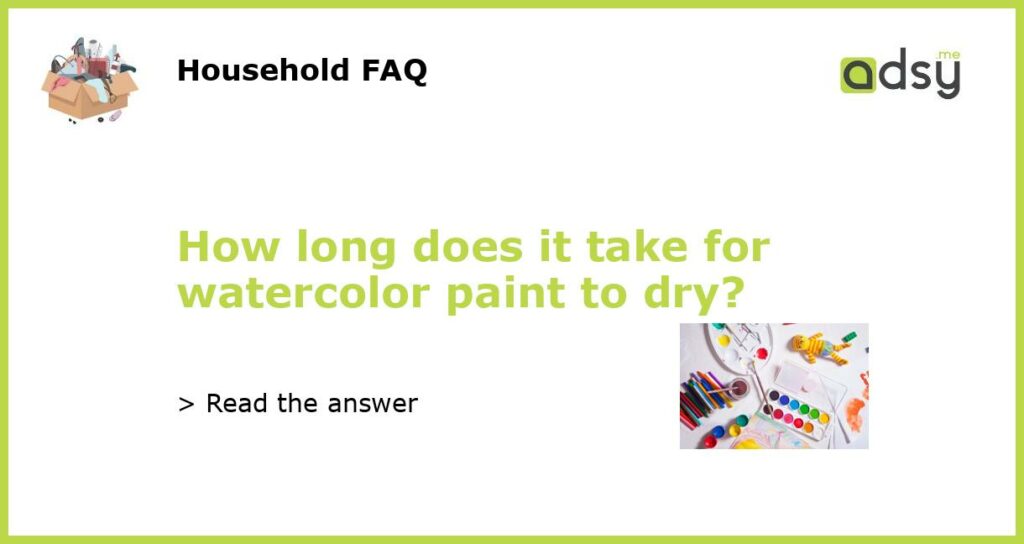Understanding the Drying Time of Watercolor Paint
Watercolor paint is a versatile medium loved by artists for its transparent and luminous qualities. However, one common question that arises when working with watercolors is how long it takes for the paint to dry. The drying time of watercolor paint can vary depending on several factors, including the type of paper, the amount of water used, and the humidity of the environment.
Factors Affecting the Drying Time of Watercolor Paint
1. Type of Paper:
The type of paper used for watercolor painting can greatly impact the drying time of the paint. Porous papers with a rough texture, such as cold press or rough watercolor paper, tend to absorb more water, causing the paint to dry slower. On the other hand, smoother papers like hot press watercolor paper have a quicker drying time as they don’t absorb as much water.
2. Amount of Water Used:
The more water you use when applying watercolor paint, the longer it will take for the paint to dry. If you apply a wash or a wet-on-wet technique where the paper is saturated with water, it can take a significant amount of time for the paint to fully dry. Using less water and applying the paint in thinner layers will result in a shorter drying time.
3. Humidity:
The humidity level of the environment in which you are working can also affect the drying time of watercolor paint. In humid conditions, the paint will take longer to dry as the moisture in the air slows down the evaporation process. On the other hand, if you are in a dry environment with low humidity, the paint will dry faster.
4. Pigment Used:
Some pigments in watercolor paints have a slower drying time compared to others. Certain organic pigments or mixtures containing these pigments may take longer to dry. It’s always a good idea to check the drying time of specific pigments or consult the manufacturer’s instructions to get a better understanding of drying times.
Approximate Drying Times for Watercolor Paint
While the drying time of watercolor paint can vary, depending on the factors mentioned above, here are some general guidelines:
1. Thin washes or transparent layers: Thin washes of watercolor paint applied in a single layer usually dry within a few minutes to an hour.
2. Thicker layers or heavier applications: If you apply watercolor paint in thicker layers or use a heavier application, it can take a few hours to a day for the paint to dry completely.
3. Wet-on-wet techniques: When working with wet-on-wet techniques, where the paper is saturated with water before applying paint, it can take several hours or even overnight for the painting to dry completely.
Tips for Speeding up the Drying Time
If you’re working on a watercolor painting and need the paint to dry more quickly, here are a few tips:
1. Use a hairdryer: Gently using a hairdryer on the low or cool setting can help speed up the drying time of watercolor paint. It’s important to keep the hairdryer at a safe distance from the painting to avoid causing any damage.
2. Blotting or lifting excess water: If you’ve applied too much water or the paint is taking too long to dry, you can gently blot the excess water with a clean paper towel or use a dry brush to lift the wet paint from the surface. This can help speed up the drying process.
3. Speed up evaporation: You can speed up evaporation by placing your watercolor painting in a well-ventilated area with good air circulation or using a fan to create airflow gently.
The drying time of watercolor paint can vary depending on various factors such as the type of paper, the amount of water used, humidity levels, and the pigments used. Thin washes and transparent layers will dry more quickly, while thicker layers or wet-on-wet techniques may take longer to dry. By understanding these factors and implementing a few tips to speed up drying time, artists can work more efficiently with watercolor paint.






